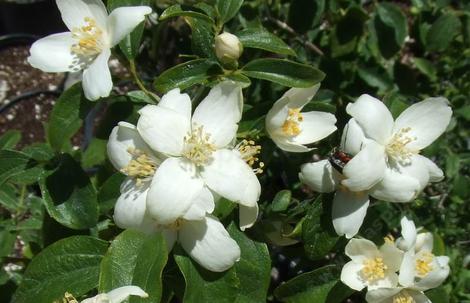Summer Flowering California native plants that grow next to a garden pond.
Native plants that live in ponds are drip tolerant. Drip irrigation is the death of the upland natives in summer. They’ll ‘tolerate drip’(not die immediately) the first 1-3 years, usually they’ll die under drip after 3-5 years. Even first year drip will permanently alter the life of the plant. Natives are not used to saturated soils in the summer. A ‘restoration’ or ‘native plant’ ‘expert’ that is pushing drip as the ‘state of art’ needs to go back to his crayons unless you’re building a pond.
I like bird baths and plant the water lovers(Fresh water marsh, Riparian, meadow) under the bird bath. If you want to extent the wetter area away from the bath you can use drip there. Marsh plants prefer the water to come from below(drip) not above(sprinkler). They’ll get calcium spots with constant overhead water. The overflow on the bird bath needs to be spotted onto a grey plant so the spots will not show, or better yet, drip onto a rock. Native insects and hummingbirds love moist rocks to drink from. Put a small wading pool into the ground at the base of the bird bath and you have a pond!
Try to situate the bird bath so you can see it from a window that is in a frequently used room. Outside the kitchen can make the dishes almost bearable.
Watching the squirrel doing his morning chin-ups to get a drink or watching a Thrasher or Robin(do robins take baths?, weird birds)trying to figure out how to fit into a pie tin is much higher entertainment that television. The squirrel could win an Emmy with his woo-is-me a squirrels life-is-so-bad attitude.
In many of the coastal areas of California you can use raingutters, sidewalks,washing machine(check your city code) to create wet spots. Water softeners create saltmarshes.








Lilies
go crazy under bird baths or
at the moisture
next to a pond. Mix in some Heleocharis,
Carex
, Juncus,
Satureja,
Stachys,Mimulus
and other native wetland species near the overflow to
create a lush and active garden spot for the native birds and insects.
Don’t get excited, the ‘bees’ are almost always natives and the natives
are frendly.
Heleocharis- Spike Rush is a green spike lawn in summer, disappears in winter. Equisetum, Horse Tail is similar but has a funny knob on top.
Carex- Grey or green with brown catkins on top. People think sedges are very different looking grasses. Often the request for 'native grasses' is meet with native sedges.
Juncus- Rushes usually have round leaves and a very spike-like habit. Why do most of the monocots that live next to a pond have a spiky nature? (The wonders of biology.)
Satureja mimuloides is a red flowered mint that hummers like. S. Douglasii is a groundcover that mats into a light green mass of small leaves. Both smell like a good toothpaste and are edible.
Stachys- hedgenettles are used by hummingbirds and butterflies alike. Plants make mini-thicket in the wet margins of a pond.
Mimulus- true Mimulus species are native perennials that love water. The monkey flowers were split many years ago into dryland woody (Diplacus) and wetland non-woody species (Mimulus). The newer keys recombine them, but for horticultural reasons alone it is useful to leave them separate. Mimulus cardinalis is red, M. Lewisii is pink, M.guttatus and primuloides are yellow.
Some forms of Oenothera love water. Oenothera hookerii is a brown thumbers delight. They really have to work to kill it. O. Californica grows in dry woodland but responds well to regular watering, or the overflow of a garden pond.
Silene is commonly associated with seeps and north slope wet spots, Scutellaria, Iris, Achillea(Yarrow), Solidago, and Asclepias fascicularis grow in sunny seasonal wet spots. These plants tolerate regular water in a garden.







